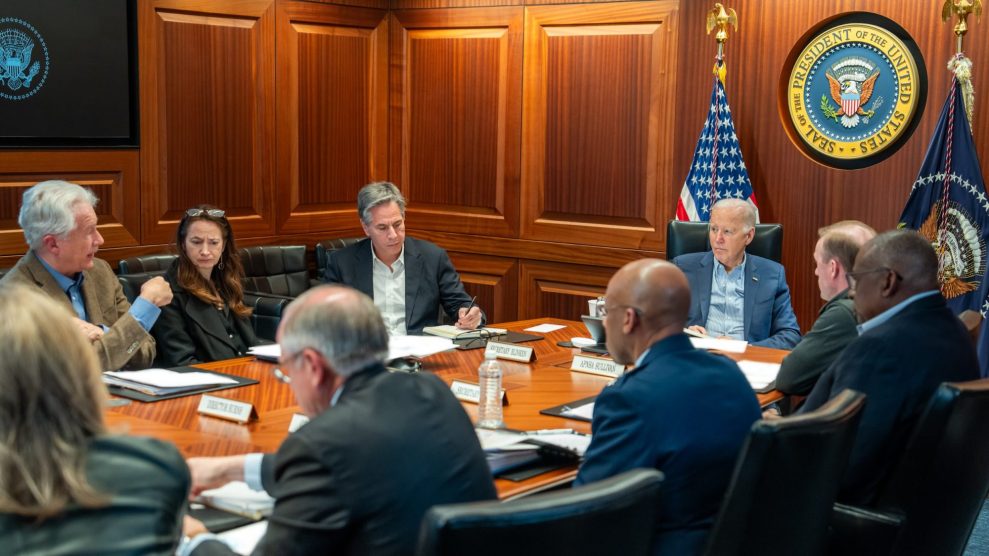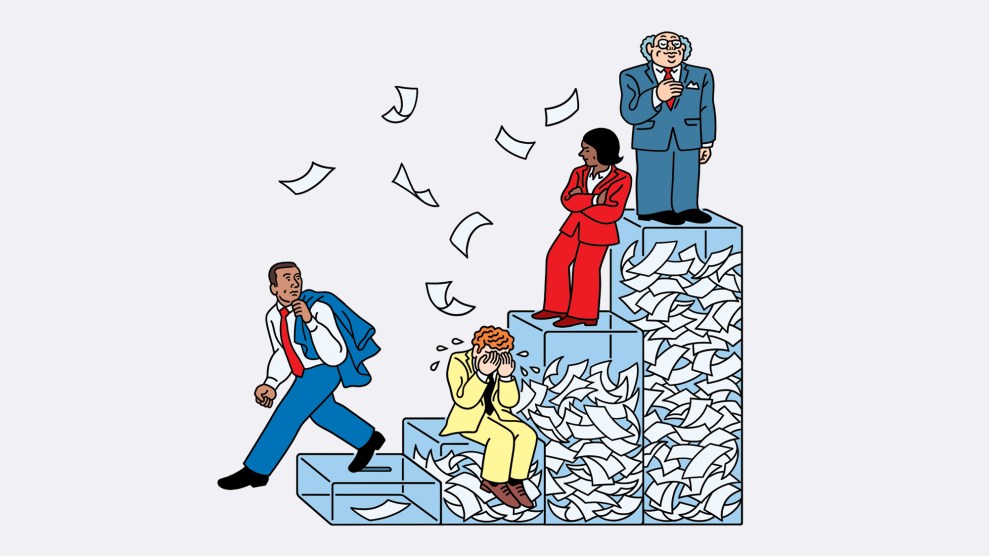People marched in the immigrations rallies on Monday because families and futures were at stake. Seattle didn’t have a half million marching for immigrant rights, like Los Angeles or Dallas, or 300,000 like Chicago, But 25,000 marched for fifteen blocks through the heart of our city, packing the streets. “I heard it on the radio,” people said. “I heard it at my church.” “I heard it from a friend.
Students came on chartered buses from farm towns 40 miles away. One family drove ninety miles after hearing on the nightly news that a march was going to happen and traffic might be swamped. Except for some students passing the word through MySpace and a few scattered social justice listservs, this march didn’t rely on the on-line networks that have become the standard for organizing protests. It was built instead on intimate networks, and as coverage rippled out, people came and brought others, affirming that this was now their country too, and they wanted to be treated with dignity and respect.
Immigrants—both those with documents and those without—came to affirm who they were and why they belonged.
“It moved me to tears to see people coming out of the shadows to find their voice,” said my friend Jay Sauceda, a community activist who grew up poor in South Texas.
“There are so many people in this situation,” he said. “They’ve been so quiet. Now they’re marching.”
“We’re hard workers, not criminals,” said the signs. “We aren’t terrorists.”
“Don’t separate us from our families.”
They proclaimed “Liberty, Equality and Dignity” and showed pictures of crops that they picked. Children paraded in strollers, teenagers laughed with their friends, elderly women helped each other walk step by step. The march was mostly Latino, but also Koreans, Filipinos, Somalians, marchers of every race.
These days, when people brandish the flag, it’s too often in the service of blind patriotism, but the sea of American flags in this march felt proud and celebratory. People carried them high, waving them again and again to say that they were Americans too, to ask that this country honor its promise of refuge and hope. The sentiment was very far removed from the belligerent nationalism often on display at sealed-off flag-waving rallies for the president.
The marchers chanted in Spanish and waved signs in English—speaking both to each other and to those who watched from the sidelines. “Si, se puede,” they chanted, “Yes, we can” —the call of Cesar Chavez’s United Farm Workers, which has been adopted by Latino justice movements ever since. They refused to remain invisible, to be exploited by businesses in low-wage jobs and then discarded whenever convenient. “I work hard. I get good grades. I’ve lived here since I was five,” said one high school senior. “Why should I and my family have to go back.
Immigration politics are complicated—it’s true that flooding the United States with cheap labor can drive down wages of those already here, especially at a time when unions are under attack and undocumented immigrants must accept rock-bottom wages or risk deportation. That all needs to change. But shutting out immigrants isn’t the answer—as the signs reminded us, we’re all children of immigrants one way or another. And the marchers reminded those lucky enough to have citizenship already that they are the ones this country relies on to pick its crops, build its houses, and clean its offices, tied in what Martin Luther King, Jr. called “an inescapable network of mutuality… a single garment of destiny.”
This march wasn’t just about advocating perfect policy solutions—the ideal path to citizenship, the ideal way to respond to all those who’d want to make this land their home, the ideal way to pass and enforce workplace laws so employers pay a decent wage for all. More than that, the march was about recognizing that those who participated, as well as their peers, have a core human dignity, that they are worthy of respect and gratitude for the labors that serve us all. The march enabled immigrants to give themselves a face and a voice.
Why can’t we have these kinds of marches to challenge the war, or to raise awareness about global warming? The marches and protests during the run-up to the invasion of Iraq were huge, but since then have been consistently disappointing, even as polls show that public opinion is increasingly against the war.
Maybe it’s because too many of us are too comfortable sitting behind our computers. Maybe the issues feel too abstract. Unless you have a son or daughter serving in Iraq, the war many not feel so concrete, certainly not in the same way that Rep. James Sensenbrenner’s immigration proposal—which would make felons of the 12 million immigrants living here without documentation—felt concrete to the marchers this past week. The stakes were clear and immediate. People turned out despite the risk of being deported, because if Sensenbrenner’s bill had gone through, then life for them would have become unimaginably harsher and crueler.
For those of us who didn’t march, but want to act for justice, we need to heed the lives of those who acted, and do what we can to ensure their voices are heard. More broadly, we need to make sure that stories about threats to human dignity and to the planet are told and retold, until people start caring enough to turn out and march, as two million did last week.















